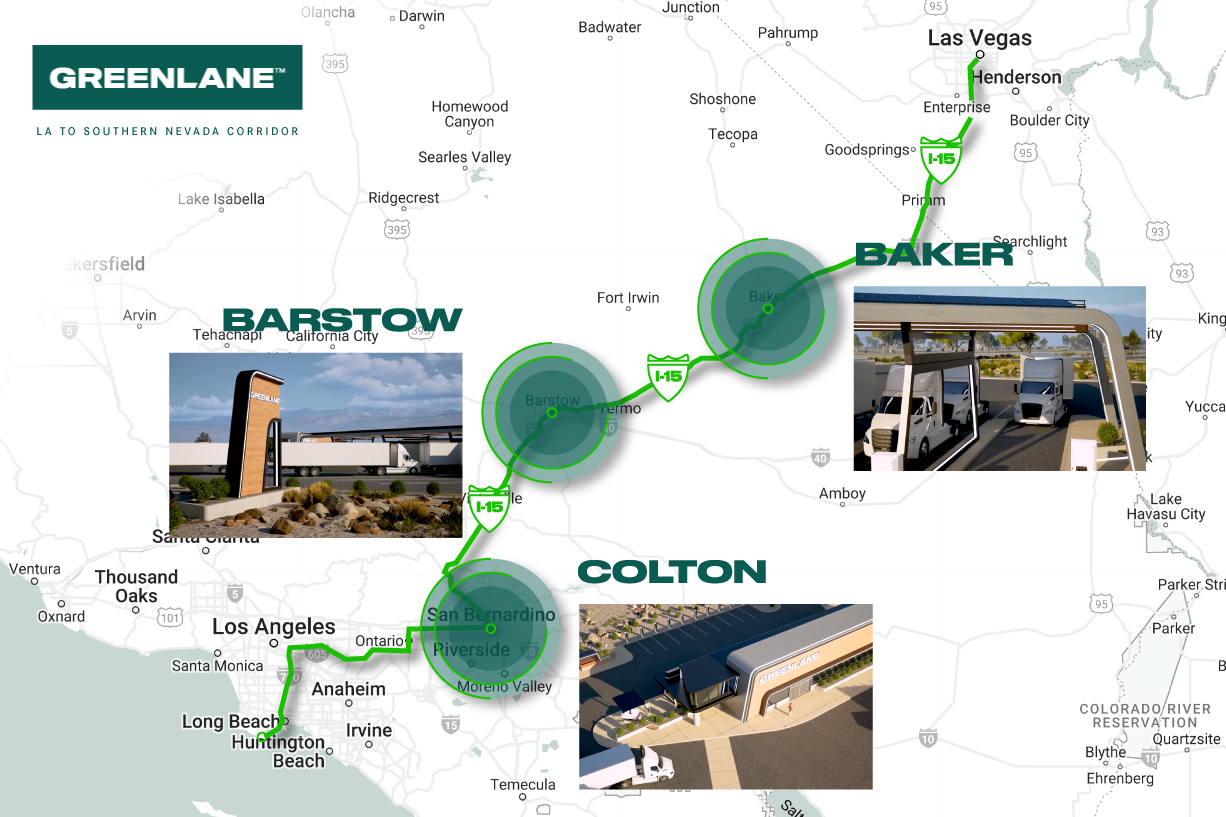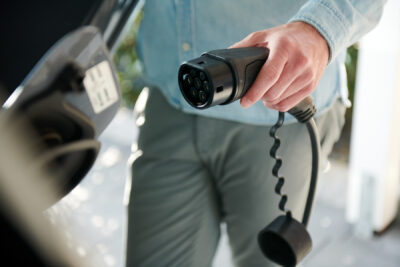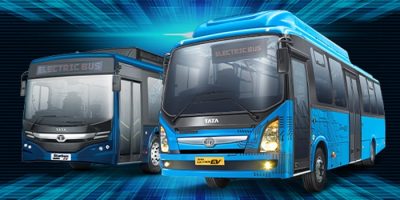Greenlane builds truck charging corridor between Los Angeles and Las Vegas
Greenlane, the joint venture between Daimler Truck North America (DTNA), NextEra Energy Resources, and Blackrock, announced in 2022 plans to build a US-wide network of charging stations and hydrogen refuelling stations. The first of these corridors is now being built along 280 miles of Interstate 15 between Los Angeles and Las Vegas and will eventually include over 100 charging stations, including DC chargers with up to 400 kW of power.
Charging locations along the new charging corridor will initially be installed in Colton, Barstow and Baker, California. The next stations following on will be built along the corridor over the next year, extending beyond Southern Nevada and to San Pedro in California.
In Colton, the charging station will include over 60 chargers. This will include 400 kW DC fast chargers for medium and heavy-duty electric vehicles. At 200 kW fast charging points, heavy-duty eclectic tractors, medium-duty electric trucks and school buses will be able to charge with longer duration and overnight charging. The infrastructure company has said that their sites will also include multiple passenger car charging stalls.
The Colton site will make room for the upcoming Megawatt Charging System (MCS) when this becomes commercially available as well as accommodating hydrogen refuelling stations for fuel cell trucks. The charging and refuelling sites are designed with amenities such as toilets and facilities for drivers to purchase food and drinks.
Patrick Macdonald-King, CEO of Greenlane, explained that, after considering various factors, such as truck telematics data, frequent freight routes and customer deployment strategy, the Greenlane team selected these three optimal locations for their first commercial charging corridor. “Our findings indicated that placing the three stations approximately 60 to 90 miles apart would maximize uptime for day-cab drivers by enabling shorter charging sessions at each stop and ultimately allowing customers to move freight confidently without any limitations,” he said.
The Greenlane announcement comes at a time when the US federal government has just released its freight infrastructure plan. This strategic plan envisages the development of charging infrastructure and hydrogen refuelling stations for medium and heavy-duty commercial vehicles by 2040 and is bound to several government investment and funding schemes to support these aims.
The Greenlane plan has not yet mentioned government support but is taking a similar approach outlined in the Biden government’s strategy. The federal government strategy is similarly to identify priority hubs based on freight volumes, connect these with critical corridors, and eventually achieve a national network by linking corridors – It appears Greenlane is going right ahead and building corridors.
In October last year, Greenlane said by 2026, it wants to offer its charging and hydrogen filling stations on “critical freight routes along the east and west coasts and in Texas”. Greenlane plans to use newly developed charging and energy management software and rely on renewable energy.
One of Greenlane’s mother company’s other subsidiary companies, Rizon, the US brand for medium-duty electric trucks launched by Daimler Truck last year, has delivered its first vehicles to customers in California. Rizon says that more deliveries of its zero-emissions trucks are slated throughout March 2024 as rollouts continue.
The electric trucks just delivered are aimed at urban and inner city delivery tasks and are going to a wide variety of businesses. This includes transporting portable toilets and recycled books and clothes, as well as for logistics operations and for businesses aiming to offer electric trucks for lease and for hire.
Rizon points out that the trucks are eligible for a $60,000 baseline incentive per vehicle through the California Air Resource Board’s (CARB) Hybrid and Zero-emission Truck and Bus Voucher Incentive Project (HVIP). At the same time, some fleets are eligible for an additional $60,000 using HVIP’s Innovative Small Fleet program. Rizon points out that this makes its chassis more affordable than a comparable diesel chassis.
As the chicken and egg metaphor applies, it is clear that the Daimler truck joint venture, Greenlane, has the important job of ensuring its family of vehicles can manage intercity and interstate travel with appropriate charging infrastructure, as businesses and logistics operations will be looking to use electric vehicles to transport freight between cities and across state borders.





0 Comments